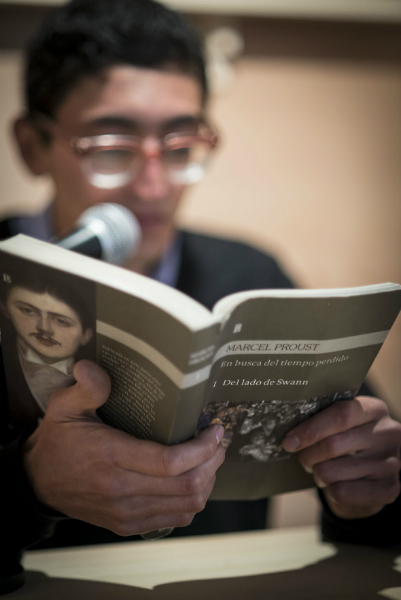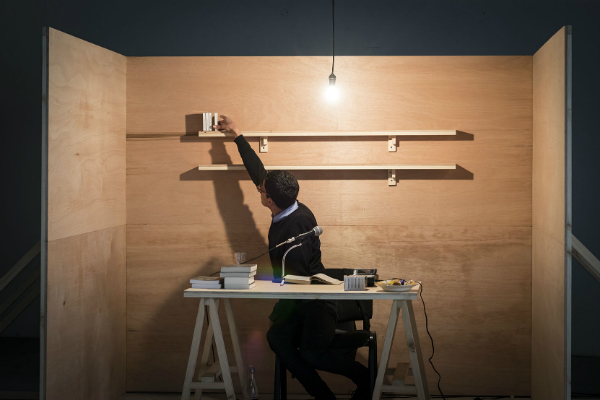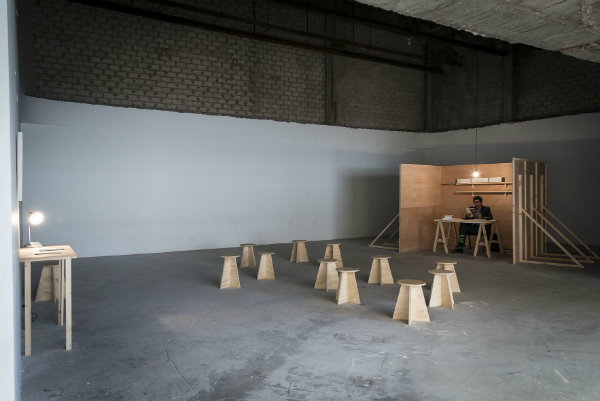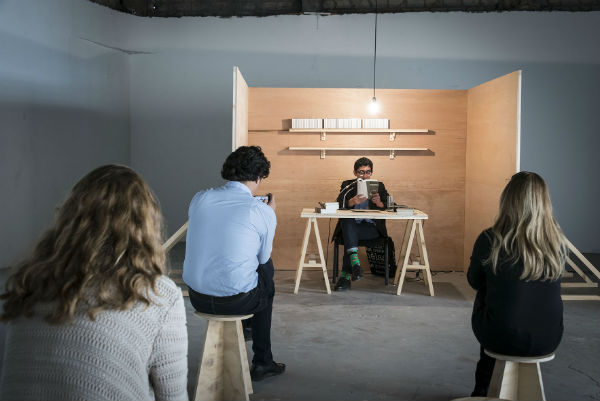2014 / En busca del tiempo perdido
![]()

![]()
Drawing and sound are constants in the work of Kevin Mancera, and two shared traits can be
found in their production: long duration and an interest in traveling. His projects are structured
around a physical journey (La felicidad, a travel diary comprising drawings made across Latin
America of visits to places found on the map that are called "La felicidad" (“Happiness”)).
However, the literary journey has also proved constant in Mancera’s work, an artist who
understands drawing to be a tool of knowledge. In Walden (2013), Mancera hand copies Henry
David Thoreau’s entire book of the same name (a diary about self-understanding as found
through isolation in nature), creating an exercise that became one of confinement in his studio.
In Cosas de viaje (2010), a project made as the result of a residency in Sao Paulo, he singles out
images that portray his experience of coming to know a new context, while in Sobre el fracaso
(2010) Mancera looks for stories about little-known characters whose projects, often absurd or
delirious, failed to reach a happy ending, thus emphasizing the fact that one of the poetic
dimensions of art (and of life itself) is failure.
Sound is also a feature of Mancera’s work thanks to a radio program that is streamed through
the internet. In the exhibition "Al aire" (2013), Mancera made drawings that related to each of
the programs he had aired up to that point, revealing that his musical tastes are as eclectic as
his interest in culture, which does not discriminate between "high" and “low”. In the present
project the audible and the literary journeys converge, and we are presented with what is
considered to be a voyage into another voyage. The subject of study in this case is In Search of
Lost Time by Marcel Proust, probably one of the most cited but least-read books in the history
of modern literature. In this performance piece, Mancera reads aloud, one by one, each of the
seven volumes of this monumental work on existence and memory, recording the readings on
cassette, an obsolete technology that, unlike its digital replacements, establishes a mechanical
relationship between the capture of the voice and the materiality of the medium by tracing an
(invisible) magnetic drawing on a tape, which is stored in a box, as its French name indicates.
This operation of image / sound / archive translation took up weeks of Mancera's time and
work, and much of this work was done alone, which seems appropriate in the case of a work on
Proust, for whom art is born "not of conversation and the light of day, but of darkness and
silence."
José Roca.
![]()
![]()

![]()

![]()

![]()